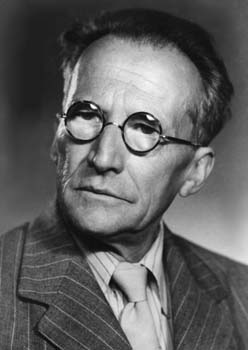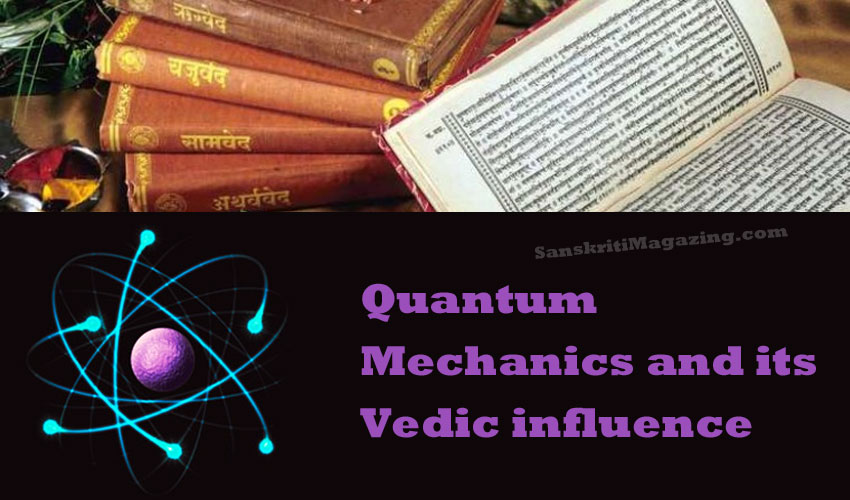Quantum Mechanics and Its Vedic Influence
SCIENCE - SPIRITUALITY, 4 Mar 2024
Prof. C.P. Girija Vallabhan | Sanskriti Magazine - TRANSCEND Media Service
Erwin Schrodinger, discoverer of wave mechanics, was deeply influenced by the philosophical wisdom of the East. Schrodinger read widely and thought deeply the teachings of Hindu scriptures. He was particularly fascinated by Vedanta and Upanishads and developed a kinship with Budha and his techniques. Schrodinger also wrote about “The Basic view of Vedanta” by expounding advaitha and non-dualism.
Erwin Schrodinger, one of the greatest scientists of the 20th century was a brilliant and charming Austrian physicist who had a passionate interest in people and ideas. He is best known for his discovery of wave mechanics, which won him the Nobel Prize for Physics in 1933. He is also laid the foundations of molecular biology by writing an epoch making book called “What is Life” which was so influential that it attracted some of the brightest scientific workers into this branch of science. Erwin Schrodinger lived and worked in the most turbulent times in the history of Europe but left an everlasting legacy, which profoundly altered the course of modern science. This essay tries to indicate how his thinking and writing were influenced by his deep interest in the vision of Upanishads and Vedanta.
 In 1926 Schrodinger proposed his wave equation, which accurately described the dynamics of the micro world of atoms and molecules. As Dirac, another Nobel laureate in physics and cofounder of quantum mechanics was to remark later ‘it contains most of physics and all of chemistry’. The wave equation derived by Schrodinger is universally recognized as one of the greatest achievements of the 20th century physics.
In 1926 Schrodinger proposed his wave equation, which accurately described the dynamics of the micro world of atoms and molecules. As Dirac, another Nobel laureate in physics and cofounder of quantum mechanics was to remark later ‘it contains most of physics and all of chemistry’. The wave equation derived by Schrodinger is universally recognized as one of the greatest achievements of the 20th century physics.
By 1960 more than 100,000 papers had appeared based on the application of Schrodinger’s wave equation. From the very beginning it was accepted as a mathematical tool of unprecedented power in dealing with structure of matter. For a long time scientists have been trying to interpret as to what it might be telling about the nature of physical world. To some, the wave function contains everything that there is to know. To others, it is only a mathematical artifact. In any case, the Schrodinger equation gives a powerful method to calculate measurable quantities that are needed to describe the atomic world.
One key idea that was utilized by Erwin Schrodinger in arriving at his wave equation was the wave nature of matter. The concept of matter waves was proposed by Louis de Broglie in 1923. He understood the universal duality of wave and particle. He was able to show that a particle with momentum will possess a wavelength given by h/p where h is the Planck’s constant. Experimental confirmation soon followed. Scientist began to accept the wave particle duality of matter. Thus it may be said that world is based on the wave phenomena, while particles are mere epiphenomena. This idea was to serve as a major theme in the development of wave mechanics as far as history of physics is concerned. However this does not tell us about the philosophical background with which Schrodinger approached the problem. Schrodinger read widely and thought deeply about the techniques of ancient Hindu scriptures and reworked them into his own words and eventually came to believe in them. This was evident from many of his writings. A beautiful account of his state of mind can be obtained from the breath taking biography of Erwin Schrodinger written by Walter Moore (A Life of Erwin Schrodinger, Cambridge University Press, Canto reprint). In July 1918, Schrodinger wrote the following: “Nirvana is a state of pure blissful knowledge……It has nothing to do with individual. The ego or its separation is an illusion. Indeed in a certain sense two “I”‘s are identical namely when one disregards all special contents- their Karma. The goal of man is to preserve his Karma and to develop it further…….when man dies his Karma lives and creates for itself another carrier”
In August 1918 he wrote ‘The stages of human development are to strive for: (1) Besitz, (2) Wissen (3) Können and (4) Sein. That is: Possession, knowledge, ability and being. It is obvious to an Indian mind that this is nothing other than the quadruplet Dharma, Ardha, Kama and Moksha of Upanishdic vision. Schrodinger wrote that he was under the very strong influence of Lafcadio Hearn (1850-1904) who immersed himself in eastern Budhist culture. Schrodinger was fascinated by the following passages from Hearn’s essays (The Diamond Cutter) “The ego is only an aggregate of countless illusions, a phantom shell, a bubble sure to break. It is Karma that prevails. Acts and thoughts are the forces integrating themselves into material and mental phenomena – into what we call objective and subjective appearances. The universe is the integration of acts and thoughts. Even swords and things of metal are manifestations of spirit. There is no birth and death but the birth and death of Karma in some form or other form or condition. There is on reality but there is no permanent individual.
Phantom succeeds to phantom, as undulations to undulations over the ghostly sea of birth and death: And even as the storming of sea is a motion of undulations not of translations, even as it is the form of the wave only, not the wave itself that travels – so with passing of lives there is only rising and vanishing of forms – forms mental, forms material. The fathomless reality does not pass. Within every creature incarnate sleeps the infinite intelligence unevolved, hidden, unfelt, unknown. Yet destined from all eternities to waken at last, to rend away the ghostly web if sensuous mind, to break for even its chrysalis of flesh and pass to the extreme conquest of space and time”.
It is evident that these thoughts recurred to Erwin Schrodinger when he devised his wave equation leading to discovery of wave mechanics. He found the reality of physics in wave motions and he also based this reality on an underlying unity of mind. Schrodinger was well versed in the techniques of Bhagavat Gita and he knew that he was a “Jnanayogi.”. His intellect showed him the way, and throughout his life he expressed in graceful essays his belief in Vedanta but he remained what the Indians called a Mahavit, a person who knows that theory but has failed to achieve a practical realization of it in his own life. He knew from Chandogya Upanishad “I am Mahavit, a knower of the world and not an Atmavit, a knower of the atman”
In autumn of 1925 Schrodinger wrote an interestingly personal account of his philosophy of life (Mein Welten sicht – My World View). He completed this only in 1960 and in chapter 5 of this book he gives the basic view of Vedanta. He writes “Vedanta teaches that consciousness is singular, all happenings are played out in one universal consciousness and there is no multiplicity of selves. He fully acknowledges Sankara’s view that Brahman is associated with a certain power called Maya to which is -due the appearance of the entire world. Maya is neither being nor not being but a principle of illusion. Brahman through Maya projects the appearance of the world. Thus Maya is the material cause of this world. In all the apparently individual form of existence the individual Brahman is present. Schrodinger did not believe that it will be possible to demonstrate the unity of consciousness by logical arguments. One must make imaginative leap guided by communion with nature and the persuasion of analogies. He learned the commentaries of Sankara on the Sutra’s from the “Sacred Book of the East” edited by Max Muller.
Erwin Schrodinger is a prominent example showing how eastern philosophy can profoundly influence western thought in the field of fundamental science. While scientists like Schrodinger did not possess a direct knowledge of Sanscrit to discern first hand both the letter and spirit of Upanishads, there are persons like Robert Oppenheimer who were not lacking in such an advantage. The fact is that irrespective of east or west, the great minds everywhere have perceived that the ultimate reality remains timeless and changeless.
__________________________________________
Dr. C.P. Girija Vallabhan is a professor at International School of Photonics at Cochin University of Science and Technology.
Go to Original – sanskritimagazine.com
Tags: Materialism, Metaphysics, Physics, Quantum Physics, Science and Spirituality, Spirituality, Vedanta, Vedas
DISCLAIMER: The statements, views and opinions expressed in pieces republished here are solely those of the authors and do not necessarily represent those of TMS. In accordance with title 17 U.S.C. section 107, this material is distributed without profit to those who have expressed a prior interest in receiving the included information for research and educational purposes. TMS has no affiliation whatsoever with the originator of this article nor is TMS endorsed or sponsored by the originator. “GO TO ORIGINAL” links are provided as a convenience to our readers and allow for verification of authenticity. However, as originating pages are often updated by their originating host sites, the versions posted may not match the versions our readers view when clicking the “GO TO ORIGINAL” links. This site contains copyrighted material the use of which has not always been specifically authorized by the copyright owner. We are making such material available in our efforts to advance understanding of environmental, political, human rights, economic, democracy, scientific, and social justice issues, etc. We believe this constitutes a ‘fair use’ of any such copyrighted material as provided for in section 107 of the US Copyright Law. In accordance with Title 17 U.S.C. Section 107, the material on this site is distributed without profit to those who have expressed a prior interest in receiving the included information for research and educational purposes. For more information go to: http://www.law.cornell.edu/uscode/17/107.shtml. If you wish to use copyrighted material from this site for purposes of your own that go beyond ‘fair use’, you must obtain permission from the copyright owner.
Read more
Click here to go to the current weekly digest or pick another article:
SCIENCE - SPIRITUALITY:
